FSI academics Professor Penny Temarel and Dr Jon Downes attended the 19th International Ship and Offshore Structures Congress (ISSC 2015) which was held in Cascais, Portugal 6-10th September 2015.
The congress is a forum for the exchange of information by experts undertaking and applying marine structural research. The aim of the ISSC is to facilitate the evaluation and dissemination of results from recent investigations, to make recommendations for standard design procedures and criteria, to discuss research in progress and planned, to identify areas requiring future research and to encourage international collaboration in furthering these aims. Ships and other marine structures used for transportation, exploration and exploitation of resources in and under the oceans are in the scope of the ISSC.
FSI academics significantly contributed the writing of the following Committee Reports:
Penny Temarel (Committee Chairperson) – Committee I.2 Loads.
Yeping Xiong – Committee II.2 Dynamic Response
Jon Downes – Committee IV.I Design Principles and Criteria
James Blake – Committee V.7 Structural Longevity
The 20th Congress will be held in 2018 jointly between Belgium and the Netherlands and FSI academics were elected to the following committees:
Jon Downes – Committee II.2 Dynamic Response
James Blake – Committee V.7 Structural Longevity
Category Archives: Uncategorized
Sailing success
Ship science student Michael Beckett has had a successful summer winning Silver in the U21 worlds in the Netherlands in August. He is a British Sailing Team Podium potential sailor and juggling this with the challenges of studying to become a Naval Architect is an impressive achievement. Alongside his studies he has also contributed to Ship Science’s outreach activities helping in the spring with a session we supported for a science week activity at a local school in Alton. We welcome approaches from schools in our region wishing to learn more about career opportunities in the maritime sector. We are particularly keen to engage with those who might not normally consider engineering as a potential career.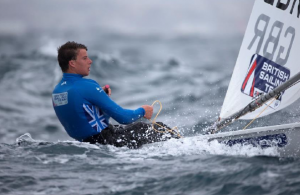
Go NUTTS 2015 in CORTONA, ITALY
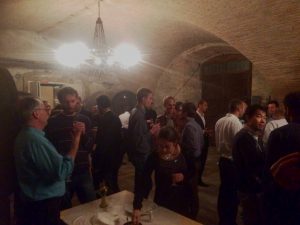
In September, the 18th Numerical Towing Tank Symposium (NuTTS ’15) took place in Cortona, Italy. Around 60 people attended the conference from various universities, institutes and companies around the world — particularly from Europe and Japan. The University of Southampton was well-represented by five researchers. The annual conference focuses on the development and application of Computational Fluid Dynamics (CFD), specifically in the maritime industry.
The key topics this year were overset-mesh techniques, cavitation modelling, acoustic analysis and propeller-hull interactions. There were also interesting presentations on turbulence modelling and free-surface modelling. Some challenging applications were presented: including analysis of fluctuating updrafts above helidecks; drag predictions of dolphin-inspired blubber coatings; and performance analysis of semi-displacement luxury yachts.
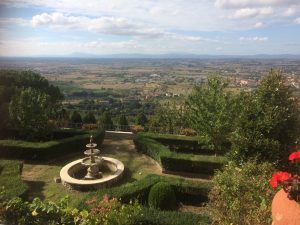
Three papers were presented by the FSI group. Joseph Banks presented work on experimental and computational methods for bend-twist coupled foils. Gabriel Weymouth demonstrated real-time, intuitive CFD based on Immersed Boundary methods. Artur Lidtke presented a joint paper with MARIN (Maritime Research Institute Netherlands) on propeller acoustics based on the Ffows Williams-Hawkings equations. The contributions from Southampton were well received and inspired lively conversation.
Cruising the Southampton Waters
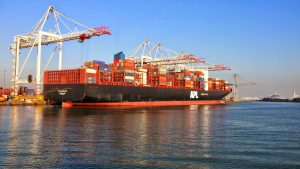 Staff and students of the ship science and maritime engineering courses were joined by researchers and PhD students of fluid structure interactions to celebrate the end of a busy week 1 by cruising Southampton water. The weather for the early evening was a perfect crisp autumnal one with barely a cloud in site.
Staff and students of the ship science and maritime engineering courses were joined by researchers and PhD students of fluid structure interactions to celebrate the end of a busy week 1 by cruising Southampton water. The weather for the early evening was a perfect crisp autumnal one with barely a cloud in site.
The ferry departed at 16:00 from the Blue Funnel Terminal at Ocean Village and sailed around Southampton Waters, the convergence of rivers Itchen and Test, and further on to the Container Terminal.
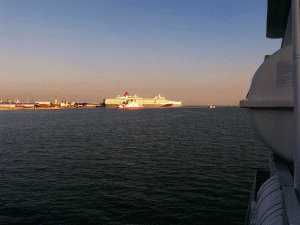
People aboard had a vantage point for viewing Cruise Ships, and also managed to take in container ships being loaded/unloaded and sail past the point where the Titanic was once anchored. It was an opportunity for the new students to meet the whole group. In all 170 people attended.
Safer life boat evacuation
An external article in futurenautics (see page 44 and onwards, along with a mention in the editorial) is based on the research of our Ship Science student Alex Iley who was a recipient of a DNV GL Young professional of the year in the ‘safer’ category. In his work he examined the practicalities of of a lifeboat based evacuation using amongst other things the people flow modelling package ‘Mass Motion’. He found that making often quite small changes to the on-board environment could significantly reduce the time to embark passengers onto lifeboats. The article itself is well worth a read but many congratulations to Alex for being such a worthy winner of the award.
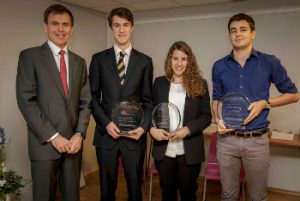
Rain stops play
 Over 60 members of the fluid structure interactions group attended the annual summer awayday at the Wide lane sports ground. As part of the event the annual staff-student cricket match took place although was rained off after the PhD students had made an impressive start with their batting especially given only their team captain had ever played cricket before they came to Southampton. The staff side fielded well and were ably assisted by some of the undergraduate summer interns some of whom had played cricket before! The afternoon started with an excellent BBQ provided by Uptons and it was disappointing that the rain came in at 4pm to curtail the game. This annual match has been played for well over three decades originating as a game between ship science staff and the 2nd year undergraduates but more recently has evolved into an opportunity for all staff and phd students to get together.
Over 60 members of the fluid structure interactions group attended the annual summer awayday at the Wide lane sports ground. As part of the event the annual staff-student cricket match took place although was rained off after the PhD students had made an impressive start with their batting especially given only their team captain had ever played cricket before they came to Southampton. The staff side fielded well and were ably assisted by some of the undergraduate summer interns some of whom had played cricket before! The afternoon started with an excellent BBQ provided by Uptons and it was disappointing that the rain came in at 4pm to curtail the game. This annual match has been played for well over three decades originating as a game between ship science staff and the 2nd year undergraduates but more recently has evolved into an opportunity for all staff and phd students to get together.
Outreach to future maritime engineers


 July saw over 70, year 12 students visit and stay at the University to learn about Ship Science.
July saw over 70, year 12 students visit and stay at the University to learn about Ship Science.
The Design Triathlon Summer School saw students design, build, test and race speedboats – learning all about hydrostatics, hydrodynamics and the design process. While the Marine headstart course saw students design, build and test tidal turbines – learning all about renewables, ship science and marine engineering.
Thanks to all those or participated and helped out over the week – it was great fun for all – just see the pictures and videos!
If you would like to know more about these courses and engineering outreach at the University of Southampton be sure to check out:
http://www.etrust.org.uk/marine-engineering-and-nautical-science-southampton
http://www.southampton.ac.uk/engineering/outreach/index.page
Waves
Just a quick series of videos demonstrating the initial use of the waves in the new hydromechanics basin at Southampton.
a) a large regular wave
b) oblique waves
c) an on-board view
d) moored frigate model in severe seas
Many thanks to Dr’s Bennett and Downes for running these tests and to Dr Bennett in putting these videos together, along with the rest of the Ship Science team in hosting the Open Day visits on the 3rd and 4th July. The next University open days at which the tank will be available for a visit is on Saturday 5th and Sunday 6th September. Please remember to register via the University open day website. For those with an interest in general engineering, aeronautical or mechanical engineering you can also sign up to visit the ship science activities.
Open day – full tank!
The last month has been a busy one for the new wave and towing tank . Approximately 140 water tankers (bowsers in the correct parlance) came and went leaving behind 3000 tonnes of pure Otterbourne water. Carriage installation time lapse….
The first proper use of the wave makers occurred last week and they can create some large waves which is very exciting. We are hoping to demonstrate these at the next University open days at the end of this week all day on Friday 3rd and Saturday 4th. We are very keen to promote our ship science degree programmes to prospective students so please feel free to let friends and family know of this opportunity.
We are doing regular tours of the new tank, talks about ship science, tours of our new building (B176)and its new labs as well as the

Faculty Design Show in B177. The new tank is in B185, all on the new Boldrewood campus co-located with Lloyd’s Register’s Global Technology Centre. Just pop in and have a chat with the staff and students around.
As usual in a small discipline we find it difficult to get the message out about the fascinating careers and excellent salaries to hard pressed schools and their students so any help our friends can do in this respect is much appreciated. The next Open day opportunity is in early September.
We are more than happy for members of staff to visit schools to give talks or for a school group to visit us. Please contact our admissions teams, led by Dr Dominic Taunton, if you would like to discuss these opportunities.
MARINE2015 in Rome
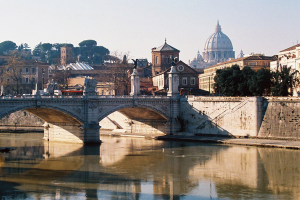
This year the 6th International Conference on Marine Engineering was held in Rome. The conference spanned three days with three parallel sessions, aiming to bring together scientists working on computational methods for maritime engineering. Presentations came from various backgrounds, including naval architecture, offshore engineering, coastal engineering, renewable energy, underwater structural engineering and fish farming. Most attendees were from a computational fluid dynamics background, though with a great variety of methodologies. Whilst viscous-flow finite volume codes were the most represented, there were interesting results from smooth particle hydrodynamics and Lattice-Boltzman methods. There were several plenary lectures which focused on fluid-structure interactions and complex viscous modelling of bubbly flows and breaking waves.
Across all fields and methodologies there were some similar themes. Accurate viscous modelling, adaptive mesh technologies and hardware-software interaction were key topics throughout. In naval architecture, much of the discussion was focused on accurate manoeuvring simulations in waves, design & optimization and the use of advanced turbulence modelling.
The University of Southampton had two attendees: Ameen Bassam presented on “Ship Voyage Energy Efficiency Assessment Using Ship Simulators” and James Hawkes presented on “Chaotic Linear Equation-System Solvers for Unsteady CFD”.
The next MARINE conference will be held in Nantes, France, in 2017. Full papers from this year can be downloaded from:
http://congress.cimne.com/marine2015
